May 3, 2012
Increase the live save rate of animals in your Community – no experience needed
Texas has several no kill communities; interesting to note about four is that the leadership that transformed these communities to no kill do not have a career shelter professional resume. In fact, they have no expertise in managing a municipal animal shelter. Yet through their leadership, the taxpayer funded, open-admission animal shelter in their community now saves more than 90% of the animals that are entrusted to their care every year. I find that simply amazing! And very inspiring!
Opponents of no kill have a lot of reasons for why it won’t work in their community. A lot. However, the no kill equation the No Kill Advocacy Center gave us is the ‘common sense’ approach to transforming our communities and increasing the save rate to more than 90%. Things rarely succeed when people focus on the negative; if you want true success, find the solution that is proven to work and follow that! We all have a choice in where we choose to place our focus and the success or failure of our efforts will speak to that.
Meet Dr. Ellen Jefferson, Austin Pets Alive! Austin Texas: she graduated from Virginia Maryland College of Veterinary Medicine in 1997. She founded EmanciPET in 1999 and directed it for nine years. Before that she worked nights as an emergency room veterinarian and days volunteering at the local animal shelter. Ellen joined Austin Pets Alive! in 2008 and began applying best practices in efficiency and operations to resolve Austin’s high euthanasia rate, which was at 50%. Within the first year of her leadership, Austin Pets Alive! reduced euthanasia in Austin by more than 20%, and in 2011, Austin reached a 91% save rate.
As Ellen shared at the DFW No Kill Workshop, she initially believed spay/neuter was THE SOLUTION to reducing the kill rate and she founded EmanciPET; as a vet, that was her area of expertise and her contribution for change. But after several years and no true reduction in the number of animals being euthanized, she began to look for other solutions. That is when she heard a presentation from Nathan Winograd, No Kill Advocacy Center; of the tenants of the no kill equation, she said “it’s just common sense.”
Austin Texas is currently the largest taxpayer-funded, NO KILL open-admission shelter in America.
Meet Cheryl Schneider, Director of Animal Services, Williamson County: Cheryl spent the first 32 years of her career saving the lives of people as a nurse/paramedic. For 20 of those years, she was an EMS Director. She asked to work in the animal shelter because she wanted to reduce the kill rate.
Williamson County is currently the only taxpayer-funded, NO KILL open-admission COUNTY shelter in Texas that has committed to and is achieving a consistent save rate of 90% or better.
Meet Sgt. Karl Bailey, Seagoville Animal Services: He had 22 years experience in law enforcement, when the city decided to move animal control from code enforcement to the police department. Sgt Bailey’s boss then handed the shelter responsibility to him; when asked what his expertise in managing a shelter is, his boss replied “You love dogs.” That could not have been a more profound reason … as number 11 of the no kill equation is “a compassionate shelter director.”
As Sgt. Bailey shared with us at the DFW No Kill Workshop in March, he knew nothing about sheltering other than he would NOT kill the animals. So, he used ingenuity and got online with his friend Google. He literally began to Google how to do things. Johanna Bigley had been networking the pets on Facebook, many of you may remember early on, she was the lone voice for the Seagoville Pets. Social media has played a key role in raising awareness for the Seagoville shelter when they first got started; some volunteers came from the Fort Worth/mid-cities area to help!
Sgt Bailey made one of the most difficult decisions ever. He had no plan, he had only a moral conviction that he should not be responsible for the killing of healthy, adoptable animals. Unlike many cities that set a timeline with benchmarks to achieve, he led the shelter to no kill overnight and has faced many obstacles in the process. Key to note here is that Sgt Bailey did NOT let the obstacles detour his mission to save lives. He found ways to break through the obstacles and save lives. The Seagoville animal shelter is the little shelter that could did! With no experience, no budget, and a tiny staff of only Sgt Bailey and Brenda Stevens – with Sgt. Bailey still working full-time in the field as a police sgt. – Seagoville proves that no obstacle is so great as to thwart the goal to be a no kill shelter!
Meet Michael Kitkoski, Rockwall Pets: he began his career as a news editor, spent five years as a sports producer, and has owned his own business for the last 25 years. Michael and his wife Pam, his partner in transforming Rockwall to no kill, met in college. He likes to joke that if two Polish Aggies can transform a city to no kill, any one can.
Michael and Pam began as Rockwall animal shelter volunteers, helping out where they could, creating innovative programs to promote Rockwall shelter pet adoptions, and began Find a Friend Friday where they took shelter pets to off-site adoptions. The off-site adoption events help raise awareness for the pets in need, increased the adoption rate, and formed a goodwill partnership with businesses that allowed the adoption events at their location. Their efforts took on the proverbial snowball effect; as people became aware of what they were doing, they wanted to be a part of saving lives. What began with two volunteers is now a life-saving no kill 501(c)(3) organization called Rockwall Pets and the distinction of being only one of two no kill communities in North Texas.
Michael and Pam are taking the no kill mission further. They recently launched Dallas Pets Alive! which is based on the Austin Pets Alive! model that was key to Austin’s no kill success. It’s important to note that the drive behind bringing the no kill equation to Dallas to save lives first began with David Bayoud and Gerlynn Davis, neither of which have ever worked for a shelter – or rescue. They learned of the problem facing shelter pets and David contacted Best Friends Animal Society which directed him to Austin Pets Alive! They attended the no kill conference held last fall in Austin and came back to Dallas with the passion to see the solution implemented. They attended Dallas Animal Services commission meetings, met with civic leaders, no kill advocates, and talked no kill to anyone that could get in front of including Michael Kitkoski.
Isn’t that the way it should be? When we learn the plight facing shelter pets, and see the high kill rate in our taxpayer funded shelters, shouldn’t we look at the proven solutions that are working in other cities and find a way to begin implementing those changes in our community?
None of these no kill leaders will tell you it’s easy; in fact, in tomorrow’s blog post, I will share some of the obstacles they face that challenge their mission daily. The key is, these leaders are unwilling to let obstacles prevent them from the success of their goal. They lead with passion, ingenuity, and a commitment to do the right thing. They don’t listen to the people that say it can’t be done. They don’t place the blame on the public, they engage the public to be life-saving partners with them. They simply keep the focus on doing the right thing. As a result, their communities are no kill and more than 90% of the animals that enter their shelters each year … live! Very inspiring! To learn more about No Kill, click here.
Subscribe Now: Be sure and subscribe to follow the Pack and never miss an informative Pawsitively Texas blog post! Add your email address, then click the Subscribe Now link. Look for the yellow/orange icon in the upper right column. No worries, we’ll never spam you, you’ll only receive an email notifying you of new blog posts on Pawsitively Texas.

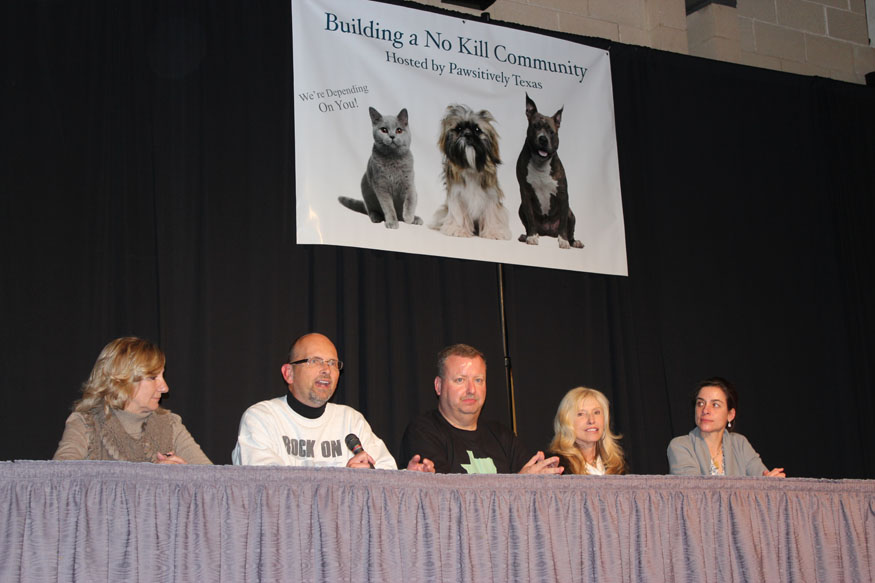


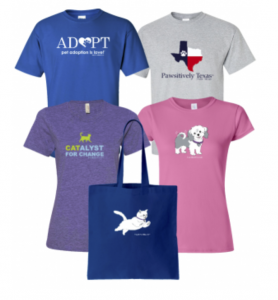

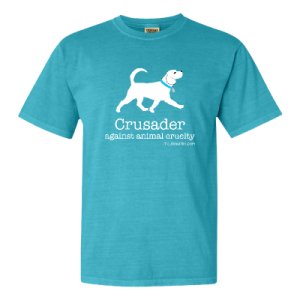
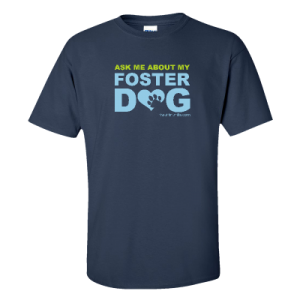

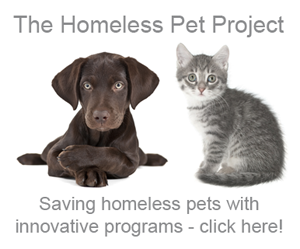
I am so inspired by all the compassion and wonderful work these people have done. I live in Austin and volunteer with Austin Pets Alive! as well as other rescue groups. I also am a Pet Massage provider. While these rescue groups and volunteers are vital, I was wondering what it would take to get some of the very loose laws regarding spay/neuter improved. From what I could find, it is legal in Texas (and probably many other states) to allow unaltered (or any for that matter) dogs to roam free. The only criteria is that they have been registered (which costs between $1 & $5 and does not include anything about vaccination or spay/neuter) and that they are wearing an identification tag. And this just covers counties that adopt the subchapter. Other states have implemented a much higher registration fee for unaltered dogs, which is a step, but I would think that with the thousands and thousands of people trying to save lives of unwanted dogs, we could get together and do something to improve the laws to keep unaltered dogs from roaming free and breeding in the first place. With numbers of unplanned puppies growing exponentially, the shelters and rescue groups are being maxed out. I’ve been researching but just can’t seem to find a place to start with this.
Hi Susan, from what I understand about mandatory spay/neuter laws, it can have a reverse effect – they are also oftentimes an unenforced law. That said, every city has their own laws and fees regarding altered pets. No Kill Texas Advocates is a group that focuses on animal law in Texas; you may want to check them out too. Austin has great organizations like Emancipet and APA’s PASS program that helps people keep their pets with low cost solutions. North Texas has several too. I believe those are needed groups to help people. There are some sectors of communities that do let their pets run free and it’s very sad; not just in increasing the pet population, but so many things can happen to them when they are left to their own or forced to live life on a chain.
Alva,
You mentioned in one of your posts that you wouldn’t be able to videotape the DFW No Kill Workshop but you hoped to have a manual. Was that manual published? Is it for sale?
Thanks.
Joanie
Hi Joanie, yes, it was handed out to attendees upon check-in at the workshop.
Alva
Fantastic people like these humane shelter directors restore my faith in humans! It’s so great to read about what you are doing to save the lives of pets who are taken to shelters — and that the shelters you run are genuine sanctuaries which help find good homes for pets, rather than murder hundreds or thousands of them without a conscience. Please write a how-to book or DVD and hold workshops for other so-called shelter managers to attend and learn about your philosophy and methods for saving shelter animals. It is very true that the attitude of shelter management determines whether a so-called shelter is a safe and caring refuge for temporarily homeless animals or a scary, callous slaughterhouse for once-beloved pets. There is no excuse for the excessively high kill rates of some so-called shelters that are the equivalent of pet Auschwitz; there is especially no excuse for inhumane killing methods such as gassing or heartsticking. You great people are so inspirational; please teach your compassionate methods right across the country and spread your message around the world. The animals who find themselves in your care are very lucky!
Austin Pets Alive held a workshop in February and the Mission: Pets Alive workshop is March 23 in Irving – details here: http://missionpetsalive.eventbrite.com We’ll also have videos available at http://animalrescueresources.com in a few weeks. For the March 23 workshop, Texas ACOs can receive CEU credit if they attend. Please help spread the word and invite your local ACOs to attend!